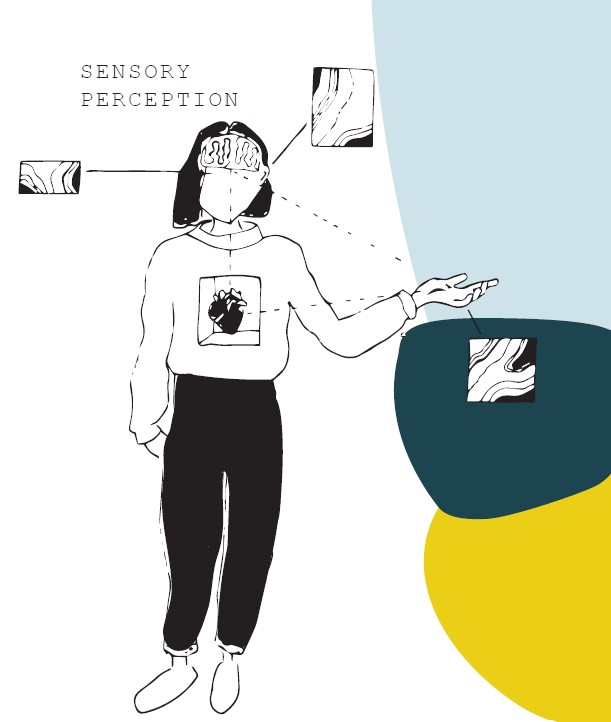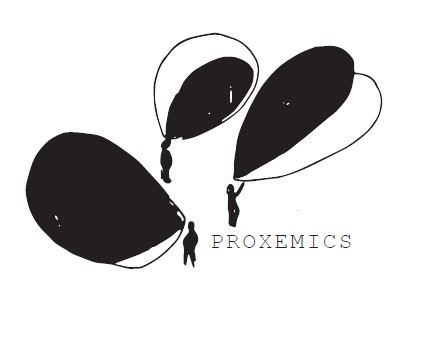︎ Stress At Your Desk
Exploring a biophilic approach to building soft architecture that accommodates sensory sensitivities
By Makenzie O’Connor ︎


Hypothesis
The built environment is inherently exclusive and inaccessible to individuals with sensory perception sensitivity. I am setting out to explore the use of living materials and biophilic inspired design
as a way to promote soft architecture that invites the human imprint and free expression.
Implementing biophilic inspired interiors in public and private spaces will improve accessibility for any individual with sensory processing sensitivities.
The built environment is inherently exclusive and inaccessible to individuals with sensory perception sensitivity. I am setting out to explore the use of living materials and biophilic inspired design
as a way to promote soft architecture that invites the human imprint and free expression.
Implementing biophilic inspired interiors in public and private spaces will improve accessibility for any individual with sensory processing sensitivities.
- Why?
The built environment is inherently exclusive and inaccessible to individuals with sensory perception sensitivity. I am setting out to explore the use of living materials and biophilic inspired design s a way to promote soft architecture that invites the human imprint and free expression.
- How?
A central concept of this project is that of sensory perception. In thinking about sensation as a factor or neurodiversity, it is possible to then imagine spaces as sensorially accessible or inaccessible. The central concept of sensory perception acts as a measure, in a sense, for the exclusivity of a space, and this project proposes biophilic inspired design as a way to accommodate sensory sensitivity - a form of universal design. Accommodating space design is an acknowledgment of your/my needs: “I see you” and “I want to make this space safe for you too”. It is an act of caring. I have found that the built environment isn’t accessible to all. Clinical disorders such as Autism Spectrum Disorder (ASD), Schizophrenia (SZ) and Post-Traumatic Stress Disorder (PTSD), have overlapping symptoms such as sensitivity to the environment and hyper- or hypo-responsiveness to incoming stimuli [1, p. 1-2]. Sensory Processing Sensitivity (SPS) has distinct neural markers and cardinal features from ASK, SZ, and PTSD, but there are common sensitivities to environmental stimuli [1]. Unsure as to who exactly would benefit most from this design intervention, I have found overlap in symptoms suggesting a wide range of benefits. Specifically looking at Autism Spectrum Disorder, research has shown that “atypical sensory experience is estimated to occur in as many as 90% of autistic individuals and to affect every sensory modality: taste, touch, audition, smell and vision” [2, p. 671]. This creates differences in perceptual experiences of the world, but, unlike research tends to suggest, it is not only a matter of neurobiological changes. Rather than trying to change processing mechanisms (brain/human behaviour) to adapt to the environment, I would like to change the environment to accommodate existing processing mechanisms - making the environment more conducive to daily functioning (surviving and thriving). Not to facilitate harmful behaviours to the self or others, but to ease the environmental strain. I will take a biophilic approach to focus on light and living materials as a way to address tactile, auditory, and visual stimuli.
- What?
I will design and build examples of soft architecture in the form of products and interior. These material explorations will be implemented in public and private spaces that might typically be inaccessible to individuals with sensory processing sensitivity. This includes facilitating the adaptation of personal space to be at a particular sensory threshold.
- So What?
The broad impact of this intervention has tremendous potential to promote accessibility for neurodiversity by creating through variability. By offering a range of choices that enable individuals to make the decision that is healthy for them. Specifically, outcomes might include
stability in daily routine, decreased friction with daily activities, ease in leaving known space and entering variable space, and a cognitive reset that allows for moments of pause during transition.


The biophilia design.
Design to Outcomes
In expanding my project from the Living Lamp as initially presented, I chose to look at how this framework might be more broadly applied to the design of interiors and products. This exploration is called Project Heads.Hands.Heart and is looking how designers might take a biophilic approach to building soft architecture that accommodates sensory sensitivities. Just like the Living Lamp, this project has a focus on light and living materials. Furthermore it is pursuing the design of a space that integrates sensory feedback and creates an affiliation with your/my surrounding environment. In an effort to move past an individualistic medical model, I am proposing that the environment find balance with its occupants and accommodate individual needs.
︎
Works Cited
1. Acevedo, B., Aron, E., Pospos, S., & Jessen, D. (2018). The functional highly sensitive brain: a review of the brain circuits underlying sensory processing sensitivity and seemingly related disorders. Philosophical transactions of the Royal Society of London. Series B, Biological sciences, 373(1744), 20170161. doi:10.1098/rstb.2017.0161
2. Robertson, C. E., & Baron-Cohen, S. (2017). Sensory perception in autism. Nature Reviews Neuroscience, 18(11), 671-684.